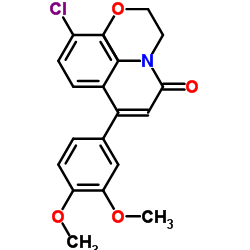Influence of initial pesticide concentrations and plant population density on dimethomorph toxicity and removal by two duckweed species.
Rachel Dosnon-Olette, Michel Couderchet, Achouak El Arfaoui, Stéphanie Sayen, Philippe Eullaffroy
Index: Sci. Total Environ. 408(10) , 2254-9, (2010)
Full Text: HTML
Abstract
Aquatic plants take up, transform and sequester organic contaminants and may therefore be used in phytoremediation for the removal of pollutants from wastewaters. A better understanding of factors affecting the rate of contaminant uptake by aquatic plants is needed to improve engineered systems for removal of pollutants from wastewaters. This work focused on the influence of initial concentrations of pesticide and population density of plants on toxicity and uptake of the fungicide dimethomorph by two duckweed species. An increased sensitivity to dimethomorph was observed with increasing duckweed population density. Less light, due to crowding, may explain this higher sensitivity and reduced removal rate. A positive relationship was also found between toxicity or contaminant uptake and initial pesticide concentration with a maximal removal of 41 and 26 microg g(-1) fresh weight of dimethomorph (at 600 microg L(-1) of dimethomorph and an initial density of 0.10g E-flask(-1)) by Lemna minor and Spirodela polyrhiza, respectively. This research also indicated that these aquatic plants can efficiently eliminate organic contaminants and may ultimately serve as phytoremediation agents in the natural environment.Copyright 2010 Elsevier B.V. All rights reserved.
Related Compounds
| Structure | Name/CAS No. | Molecular Formula | Articles |
|---|---|---|---|
 |
dimethomorph
CAS:110488-70-5 |
C21H22ClNO4 |
|
A molecularly imprinted polymer for the selective solid-phas...
2015-04-15 [J. Chromatogr. B. Analyt. Technol. Biomed. Life Sci. 988 , 182-186, (2015)] |
|
Widely used pesticides with previously unknown endocrine act...
2011-06-01 [Environ. Health Perspect. 119 , 794-800, (2011)] |
|
Competitive androgen receptor antagonism as a factor determi...
2012-11-01 [Environ. Health Perspect. 120 , 1578-84, (2012)] |
|
Detection of resistance to fungicides, mating types and fitn...
2002-01-01 [Meded. Rijksuniv. Gent. Fak. Landbouwkd. Toegep. Biol. Wet. 67(2) , 307-14, (2002)] |
|
Toxicity of metalaxyl, azoxystrobin, dimethomorph, cymoxanil...
2012-01-01 [J. Environ. Sci. Health B 47(5) , 403-9, (2012)] |